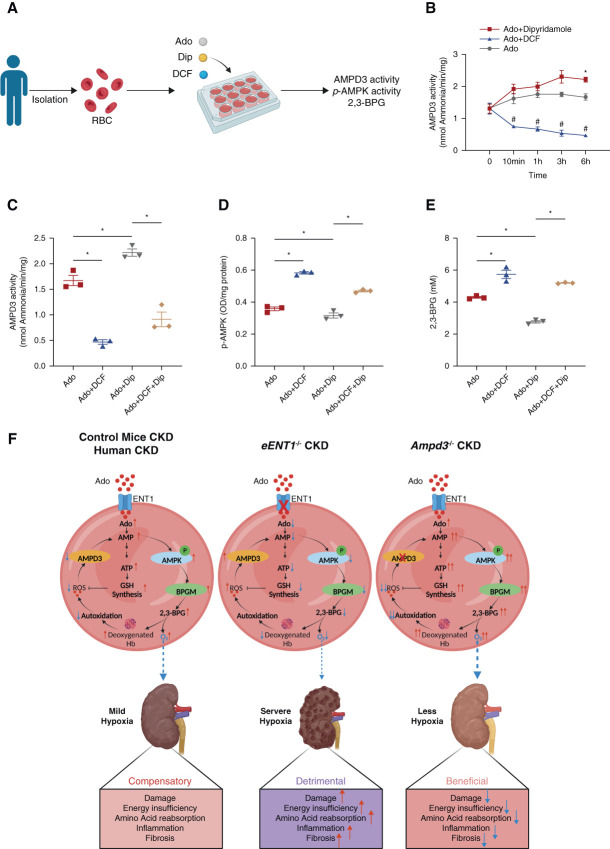Figure 9.
Molecular links of human eENT1-mediated adenosine uptake with eAMPD3-AMPK cascade and 2,3-BPG production. (A) Experimental design for in vitro experiment. (B) AMPD3 activity in isolated human erythrocytes treated with DCF or Dip in the presence of adenosine at 0, 10 minutes, 1, 3, and 6 hours. Data are expressed as mean±SEM. N=3 in each group. *P < 0.05. P value was assessed using the repeated measures two-way ANOVA with the Holm–Sidak post hoc multiple comparisons test. (C) AMPD3 activity, (D) Phospho-AMPKα and (E) 2,3-BPG in isolated human erythrocytes treated with DCF or/and Dip in the presence or absence of adenosine at 6 hours. (F) Working Model: ENT1-AMPD3 signaling network is a critical “erythrocyte hypoxia sensor” to preferentially promote the intracellular purinergic signaling cascade underlying AMPK-BPGM-mediated elevation of 2,3-BPG and enhanced O2 delivery and anti-ROS capacity to combat renal hypoxia, damage, and progression of CKD. Figure 9 can be viewed in color online at www.jasn.org.

